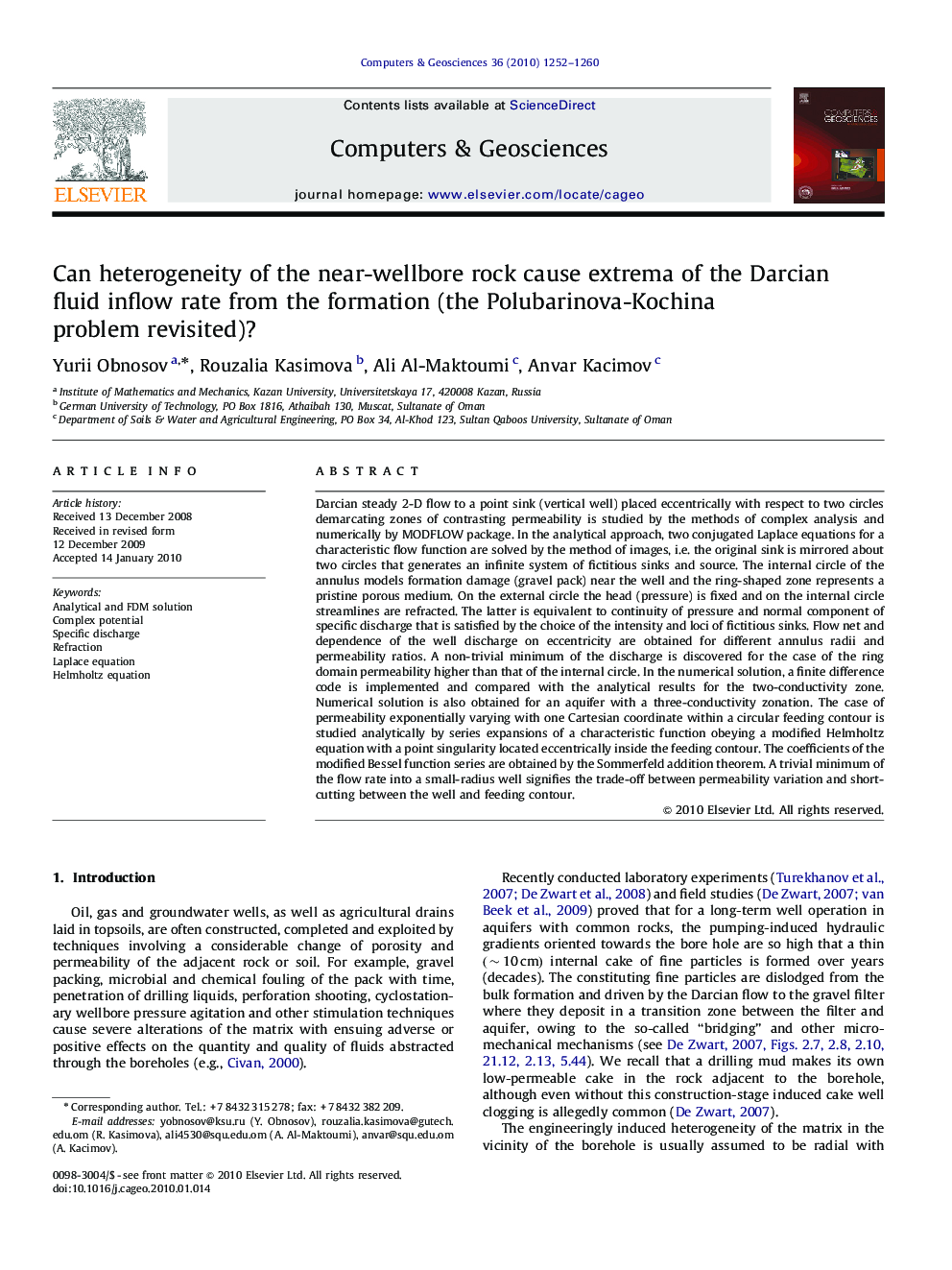| Article ID | Journal | Published Year | Pages | File Type |
|---|---|---|---|---|
| 507303 | Computers & Geosciences | 2010 | 9 Pages |
Darcian steady 2-D flow to a point sink (vertical well) placed eccentrically with respect to two circles demarcating zones of contrasting permeability is studied by the methods of complex analysis and numerically by MODFLOW package. In the analytical approach, two conjugated Laplace equations for a characteristic flow function are solved by the method of images, i.e. the original sink is mirrored about two circles that generates an infinite system of fictitious sinks and source. The internal circle of the annulus models formation damage (gravel pack) near the well and the ring-shaped zone represents a pristine porous medium. On the external circle the head (pressure) is fixed and on the internal circle streamlines are refracted. The latter is equivalent to continuity of pressure and normal component of specific discharge that is satisfied by the choice of the intensity and loci of fictitious sinks. Flow net and dependence of the well discharge on eccentricity are obtained for different annulus radii and permeability ratios. A non-trivial minimum of the discharge is discovered for the case of the ring domain permeability higher than that of the internal circle. In the numerical solution, a finite difference code is implemented and compared with the analytical results for the two-conductivity zone. Numerical solution is also obtained for an aquifer with a three-conductivity zonation. The case of permeability exponentially varying with one Cartesian coordinate within a circular feeding contour is studied analytically by series expansions of a characteristic function obeying a modified Helmholtz equation with a point singularity located eccentrically inside the feeding contour. The coefficients of the modified Bessel function series are obtained by the Sommerfeld addition theorem. A trivial minimum of the flow rate into a small-radius well signifies the trade-off between permeability variation and short-cutting between the well and feeding contour.
